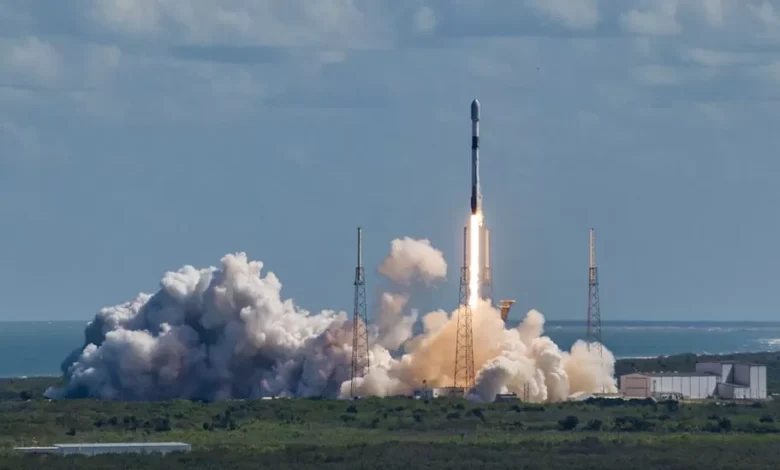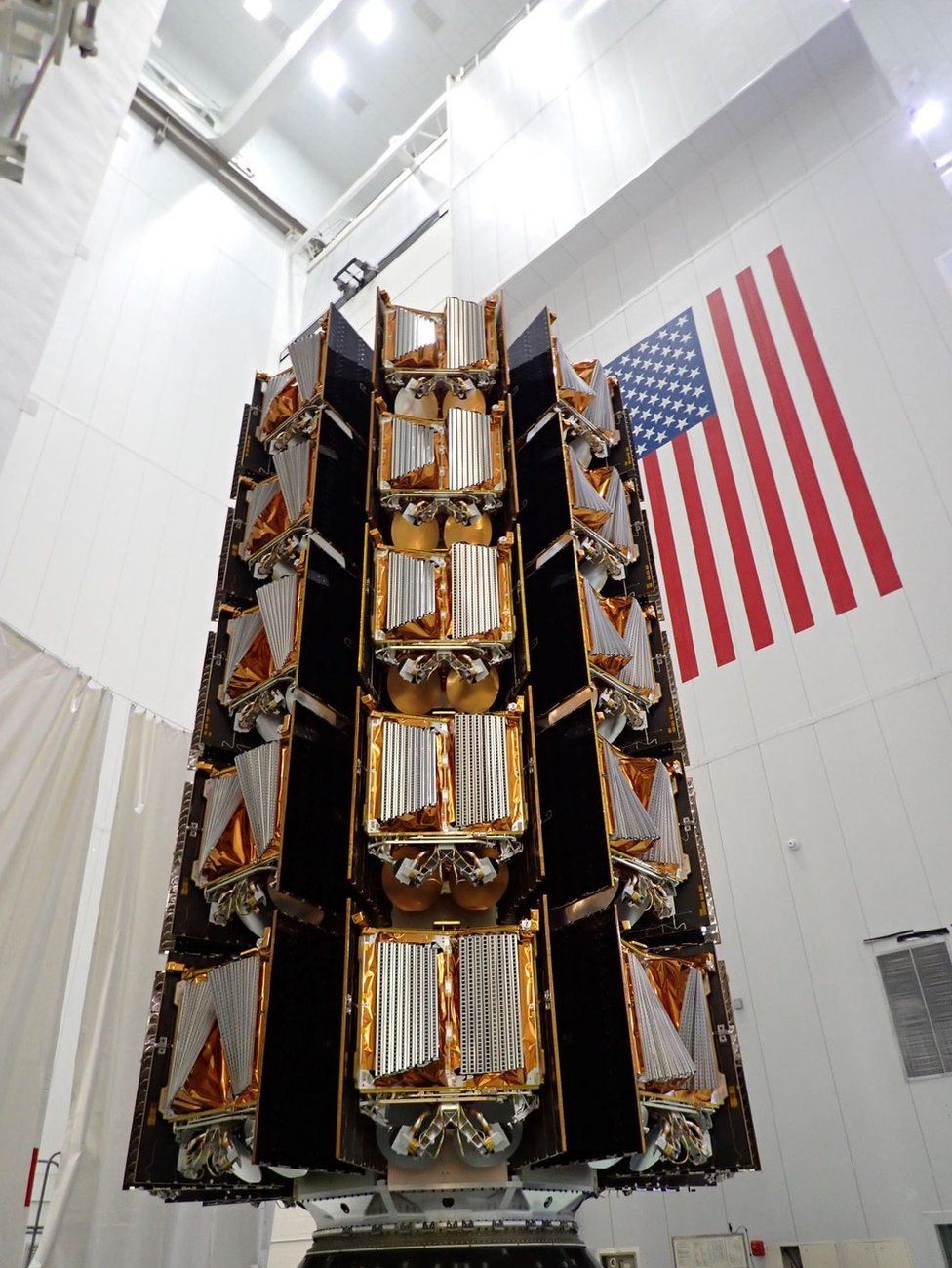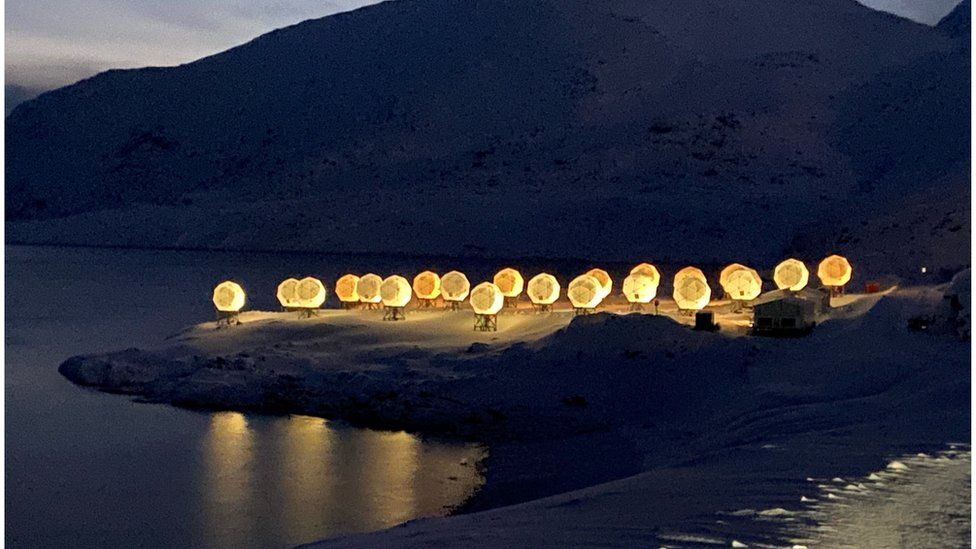OneWeb company close to taking the internet global

London-based satellite operator OneWeb is in the home straight after putting up another 40 spacecraft this week.
It takes the company’s in-orbit broadband constellation to over 580.
With one more launch in the coming weeks, OneWeb will have enough satellites overhead to deliver an internet connection anywhere on Earth.
The firm has moved rapidly to recover its position after financial collapse at the start of Covid in March 2020.
When the UK government and Indian conglomerate Bharti bought it out of bankruptcy a few months later, it was flying fewer than 80 spacecraft.
The scale-up since then had been nothing short of remarkable, said CEO Neil Masterson, with customers now being served in 15 countries north of 50 degrees in latitude, which includes the UK.
“We issued our first invoice last May, which is obviously a very important moment for us. And as of the end of December, we’ve got $800m in backlog bookings. So we’re cracking on and we’re excited to be expanding around the rest of the world, really showing what this network system can do,” he told BBC News.
It takes a while for newly launched satellites to get properly into position 1,200km above the Earth, to be tested and come online.
Batches that went up last year will extend coverage to the lower 48 US states and the northern Mediterranean come the end of May, and to 25 degrees North (think Mexico, Northern Africa and India) by the end of summer.
The final launches will give broadband connectivity to users at the equator by the year’s end. And this pattern for the Northern Hemisphere is repeated for the major land areas in the Southern Hemisphere, even including Antarctica, once the necessary ground stations are installed to complete the data links.
OneWeb plans to have about 40 nodes up and running at the close of 2023.
The company operates out of a refurbished BBC building on the old stadium site of the 1908 summer Olympics.

Most people who pass by will almost certainly be unaware of the extraordinary operation taking place inside the silver-coloured premises.
Only one other organisation in the world – Elon Musk’s broadband internet competitor, Starlink – flies more active spacecraft in orbit today.
The satellite fleet, which is divided across 12 separate planes in the sky, has to be managed 24/7. It’s an enormous software undertaking.
“You simply can’t check every single satellite on every pass. So we rely heavily on automation,” explained Francesco Sacconi, the director of satellite operations. “The satellites are generally well behaved but if there’s an issue, we’ll get alerted by the system.”

In similar fashion, the broadband connections streaming through the satellites are also being constantly monitored.
“We can inject synthetic packets (of data) into the network. We can see things like packet loss, latency, jitter, packets arriving out of sequence – anything that might degrade the performance of the service,” said Matt Hall, who directs OneWeb’s network operations.
Unlike Elon Musk’s Starlink service, OneWeb is not selling broadband connections direct to the individual user. Its clients, principally, are the telecoms companies that provide this internet service. They might also be employing the connectivity to supplement, or expand, the infrastructure in their mobile phone networks.
A typical service plan to the user’s terminal, or antenna system, could be something like 75 megabits per second (MBPS) download and 15MBPS upload. But a key aspect both OneWeb and Starlink are highlighting is low latency, or the reduced time it takes for data to make a round trip over the network.

For traditional geostationary (GEO) communications satellites that sit 36,000km above the Earth, this “ping” time might be 700 milliseconds. For the new low-Earth orbiting (LEO) satellites, it might be a tenth of this, say 80 milliseconds.
“This allows you to do things like real-time (Microsoft) Teams calls. No delay, no lag, videos running smoothly, voices running smoothly,” said senior sales engineer David Fuller.
“You can use Office applications where you’ve got a team working on a document at the same time. You can’t do that with GEO; you can in LEO with OneWeb.”
The company will go out to industry later this year to request their proposals to build the next generation of satellites. They’ll be bigger (perhaps half a tonne each versus today’s 150kg) and more powerful. But there’s unlikely to be vast numbers procured.
Previously, there had been suggestions OneWeb might try to launch thousands of satellites. The current thinking now is that the operational constellation in the sky could top out at under 1,000.

The other major objective for 2023 is to complete a merger with Eutelsat, the Paris-based satellite operator best known for distributing thousands of TV channels around the world.
The French tie-up has led to speculation that the newly formed entity might seek a role in the EU’s planned, multi-billion-euro connectivity constellation called Iris-Squared. As a strongly British outfit, and given Brexit, this might have sounded unlikely for OneWeb. But as an Anglo-French concern, it could become a different consideration.
CEO Neil Masterson won’t be drawn on any conversations but says the topic is open, not least because of the experience OneWeb now brings to the table.
“It’s not easy to build these constellations,” he told BBC News.
“There are only two LEO constellations (OneWeb and Starlink). There’s a lot of PowerPoint out there about others, but there are only two in operation. And there’s a reason for that: it’s actually pretty difficult to do.”











